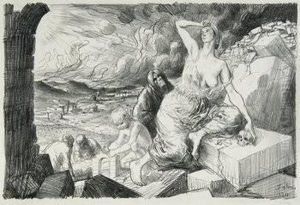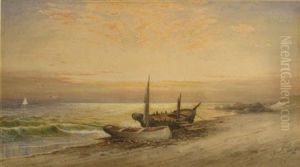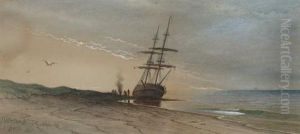John Augustus Beck Paintings
John Augustus Beck was an American artist known for his landscape paintings, particularly of the American West. Born in 1901, Beck grew up in a time when the United States was undergoing significant changes, both socially and industrially. However, there is limited information available about his early life, education, and artistic training, which is not uncommon for artists of this era, who may not have achieved widespread fame or whose works were more regional in their popularity.
Beck's artistic career is characterized by his focus on natural landscapes, with an emphasis on capturing the essence of the Western United States. His works often depicted the rugged beauty of this region, with a particular attention to the play of light and shadow, which lent a sense of depth and realism to his paintings. Despite the lack of extensive documentation on his exhibitions and the exact trajectory of his career, it is clear that Beck's paintings resonated with a certain audience who appreciated his depictions of the American landscape.
Throughout his career, John Augustus Beck remained relatively obscure in the broader art world, with a modest following that appreciated his traditional approach to landscape painting. He was part of a larger movement of artists who sought to document and celebrate the American West, an area that was rapidly changing due to urbanization and industrialization. Beck's work can be seen as a form of preservation, capturing the fleeting beauty of natural landscapes that were at risk of disappearing.
John Augustus Beck passed away in 1952, leaving behind a body of work that, while not widely recognized in mainstream art history, still holds value for its artistic merit and historical significance. Today, his paintings may be found in private collections and occasionally come up for sale at auctions, where they are appreciated by collectors who have a particular interest in the genre of Western landscape painting. Beck's legacy is that of a dedicated artist who sought to capture the grandeur of the American landscape, contributing to the cultural tapestry that defines the artistic rendering of the nation’s natural wonders.



